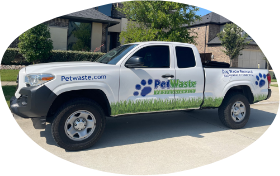How to Handle Dog Shedding: Tips and Solutions
Dog shedding can be a challenge for pet owners, but with the right techniques and tools, managing dog fur doesn’t have to be a daunting task. Shedding is a natural process for dogs, as it helps them get rid of old or damaged hair. However, excessive shedding can be a nuisance. In this article, we will explore effective tips and solutions for handling dog shedding, ensuring your home stays clean and your pet remains comfortable.
Understanding why dogs shed and learning the best ways to manage it is essential for any pet owner. According to the American Kennel Club, the amount and frequency of shedding can depend on various factors such as breed, health, and season. Let’s dive into some practical ways to reduce dog shedding and keep your home fur-free.
Understanding Dog Shedding
Why Do Dogs Shed?
Shedding is a natural part of a dog’s life cycle. Dogs shed to remove old or damaged hair and to regulate their body temperature. The amount and frequency of shedding can vary greatly between different breeds and individual dogs.
Factors Affecting Dog Shedding
Several factors influence how much a dog sheds, including breed, age, diet, and overall health. Seasonal changes also play a significant role, with many dogs shedding more in the spring and fall.
Tips for Managing Dog Shedding
Regular Brushing
One of the most effective ways to manage dog shedding is through regular brushing. Brushing helps remove loose fur before it has a chance to spread around your home. For the best results, choose a brush suited to your dog’s coat type.
Bathing
Bathing your dog regularly with a dog-specific shampoo can help reduce shedding by removing loose hair and keeping the coat clean and healthy. Avoid over-bathing, as it can dry out your dog’s skin and coat, leading to more shedding.
Healthy Diet
A balanced diet rich in essential fatty acids can significantly reduce shedding. Omega-3 and Omega-6 fatty acids, in particular, are known to promote a healthy coat and skin, thereby minimizing shedding.
Best Tools for Dog Shedding
Slicker Brushes
Slicker brushes are excellent for removing loose fur and detangling mats. They are especially effective for dogs with medium to long hair.
De-shedding Tools
De-shedding tools, such as the Furminator, are designed specifically to reach the undercoat and remove loose hair without damaging the topcoat. These tools can be highly effective for heavy shedders.
Rubber Brushes
Rubber brushes are gentle on the skin and are great for short-haired breeds. They can help remove loose fur and stimulate the skin, promoting a healthy coat.
Solutions for Heavy Shedders
Professional Grooming
For dogs that shed heavily, regular visits to a professional groomer can be beneficial. Groomers have specialized tools and expertise to manage excessive shedding effectively.
Supplements
Adding supplements like fish oil to your dog’s diet can improve coat health and reduce shedding. Always consult with your veterinarian before introducing any new supplements.
Vacuuming and Cleaning
Using a vacuum designed for pet hair can help keep your home clean. Regular vacuuming, along with washing your dog’s bedding and favorite spots, can reduce the amount of fur in your living spaces.
Conclusion
Handling dog shedding requires a combination of regular grooming, a healthy diet, and the right tools. By understanding the factors that contribute to shedding and implementing these tips, you can keep your dog’s coat healthy and your home fur-free. Remember, shedding is a natural process, and while it can’t be completely eliminated, it can be managed effectively.
If you found these tips helpful, explore more Pet Waste Professionals Tips for Dog Owners.








